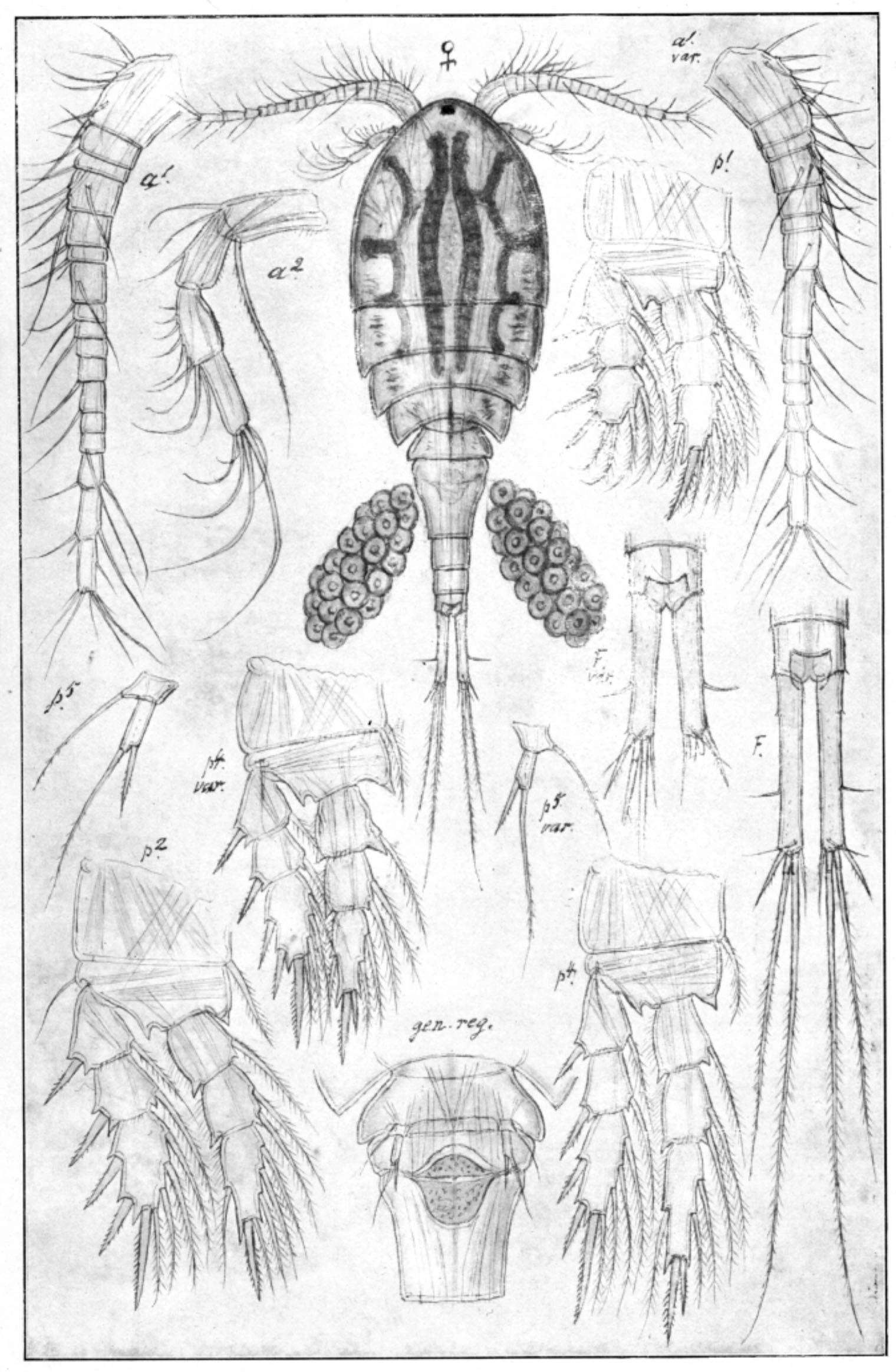Diacyclops nanus
Diacyclops nanus is widely distributed in Norway, and because it is most common in acid water, it is used as an indicator of acidity. It is small, having a relatively long tail, and with the lateral seta attached close to the middle of the tail.
Key characteristics
Diacyclops nanus (female)
Diacyclops nanus may resemble D. bicuspidatus, having a relatively long tail with the lateral seta attached close to the middle of the tail. However D. nanus is much smaller, its body is less slender, and the antennae are composed of 11 joints compared with 17 joints in D. bicuspidatus. The body of D. nanus is rather pellucid, with a faint yellowish or reddish tinge.
Female: Length 0.7–0.9 mm
Male: Length 0.6–0.7 mm
Ecology and distribution
D. nanus is the only species in the genus Diacyclops which is widely distributed in Norway, and so far it has been recorded in about 20 % of the water bodies. It occurs with its highest frequency in ditches and small ponds situated from sea level to 1444 m.a.s.l. D. nanus is used as an indicator of acidity, and when pH<5.0, it is found in more than half of the water bodies. It is most common in low and medium electrolyte rich water.
| Vitenskapelig navn | < 4,5 | 4,5 - 4,9 | 5,0 - 5,4 | 5,5 - 5,9 | 6,0 - 6,4 | 6,5 - 7,0 | 7,0 - 7,4 | > 7,5 |
|---|---|---|---|---|---|---|---|---|
| 76 | 55,6 | 28,9 | 27,4 | 17,9 | 8,9 | 7,7 | 4 |
| Vitenskapelig navn | < 1,0 | 1,0 - 1,4 | 1,5 - 1,9 | 2,0 - 2,9 | 3,0 - 3,9 | 4,0 - 4,9 | 5,0 - 6,9 | 7,0 - 9,9 | > 10,0 |
|---|---|---|---|---|---|---|---|---|---|
| 21,1 | 26,7 | 32,8 | 28,1 | 29,9 | 19,8 | 12,9 | 8,3 | 6,6 |
| Vitenskapelig navn | < 0,01 | 0,01 - 0,09 | 0,1 - 0,9 | 1,0 - 9,9 | 10,0 - 99 | 100 - 999 | > 1000 |
|---|---|---|---|---|---|---|---|
| 36,3 | 29,4 | 25,6 | 19,1 | 18,6 | 16,7 | 8,7 |
| Vitenskapelig navn | < 100 | 100-299 | 300-499 | 500-699 | 700-999 | >1000 |
|---|---|---|---|---|---|---|
| 9,7 | 19,5 | 24 | 42,5 | 20 | 21,5 |
Look alikes
Diacyclops bicuspidatus

